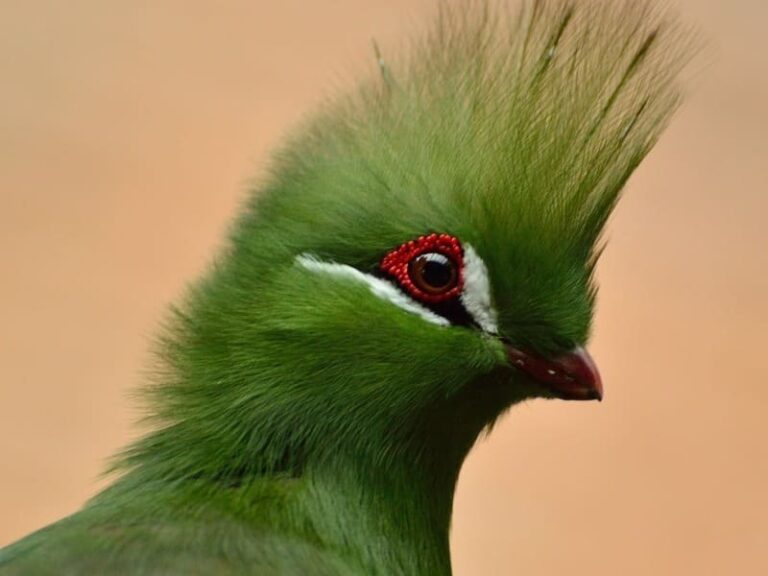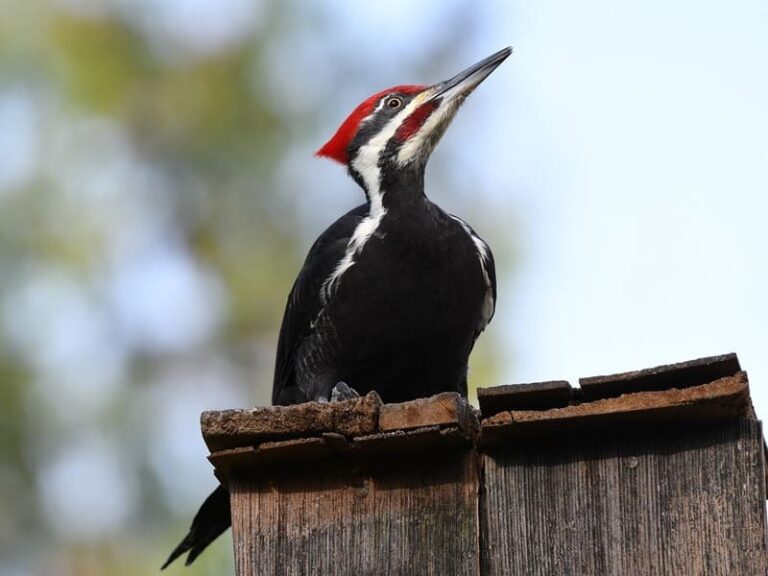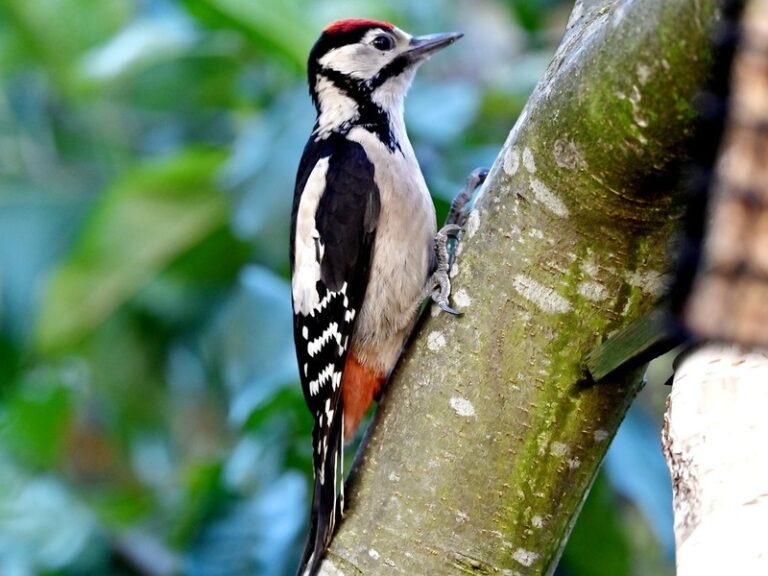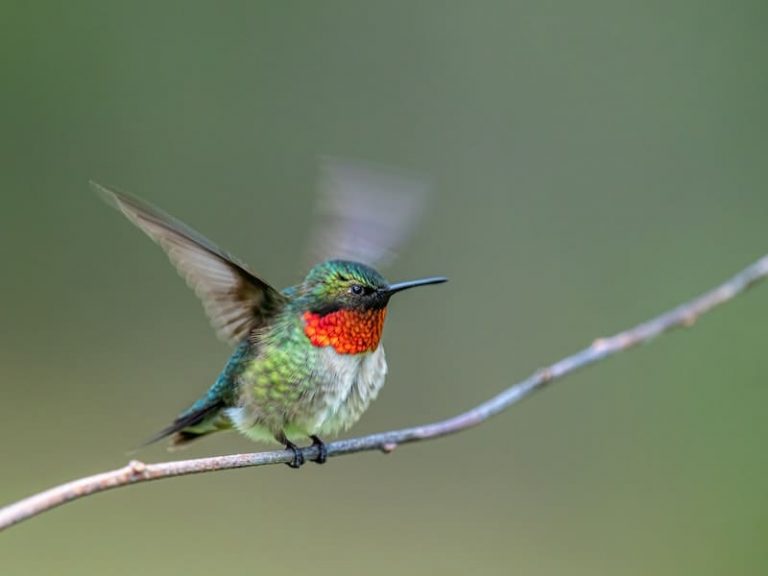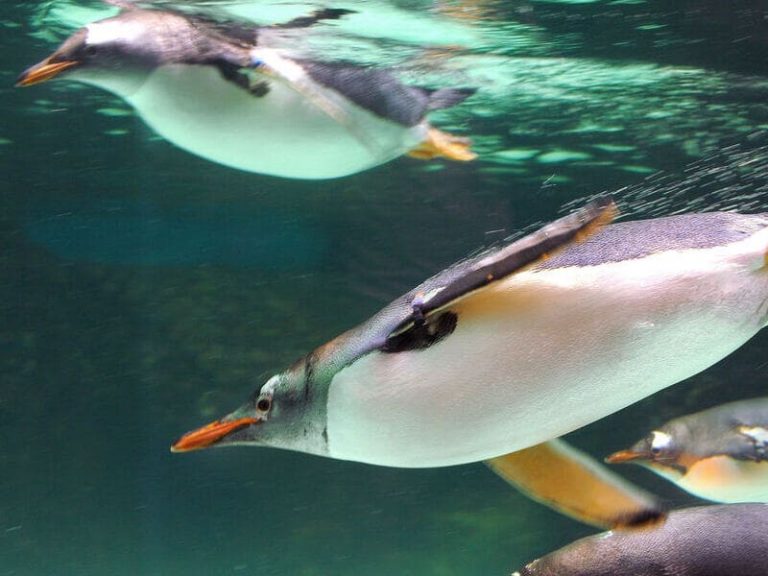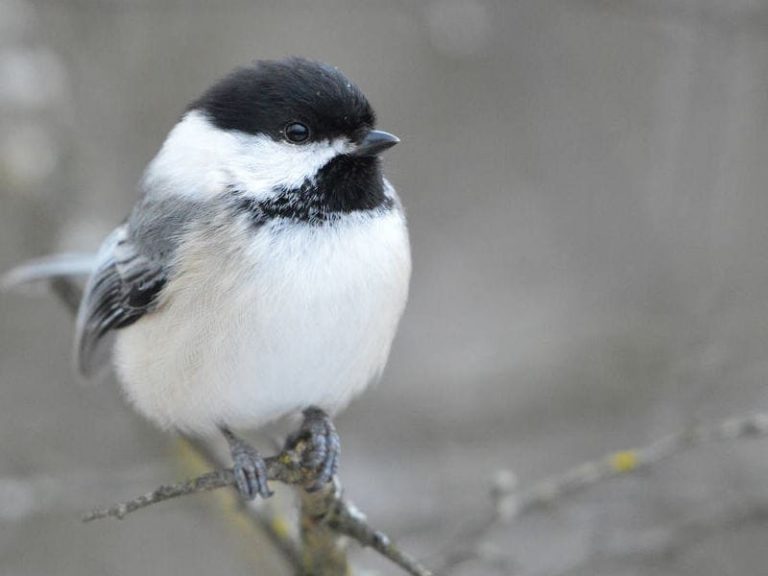12 Birds With Purple Feathers
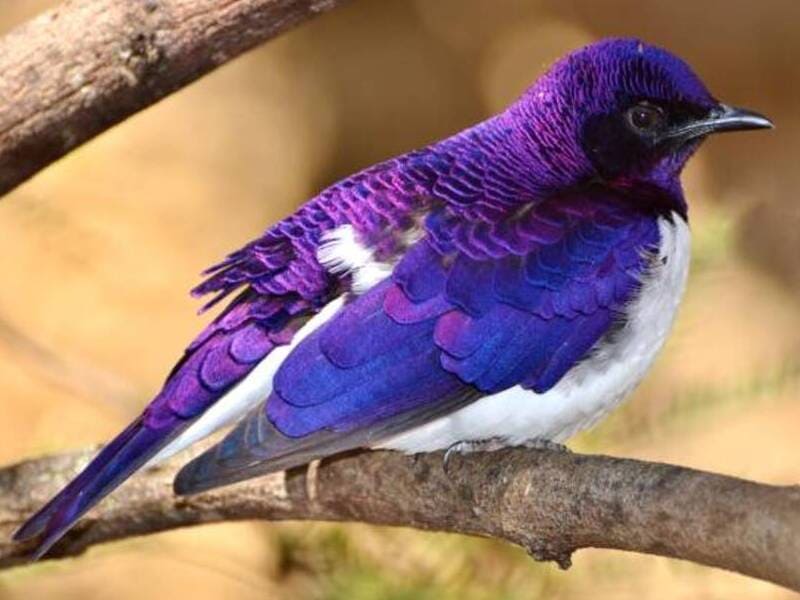
Have you ever seen birds with purple feathers? No, we haven’t either. But that doesn’t mean that they don’t exist. In fact, there is a good chance that there are plenty of birds out there with purple feathers that we don’t know about.
This is because many bird species go largely unnoticed by humans. However, just because we don’t see them doesn’t mean they aren’t there. There are more than 10 birds that have purple-colored feathers. Some of these birds are common, while others are quite rare.
In this blog post, we are going to discuss their main characteristics. We will also talk about the different types of feathers they have and what they can tell us about a bird’s health and overall well-being. So without further ado, let’s get started! Birds With Purple Feathers
Though not all birds can boast about their colorful plumage, there are a few species that stand out from the rest with their gorgeous purple feathers.
12 Birds With Purple Feathers
From the tiny vervain Hummingbird to the majestic Blue Jay, these 12 birds with purple feathers are sure to impress with their vibrant hues.
1. Purple Gallinule
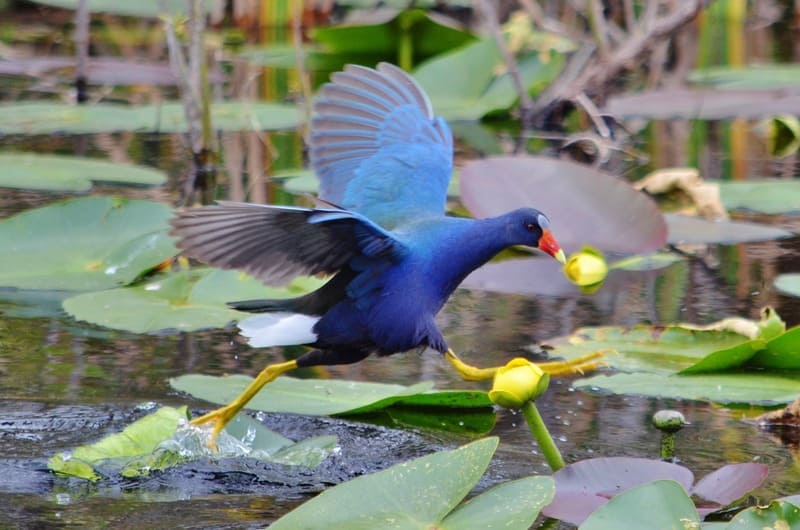
The Purple Gallinule is one of the beautiful birds with purple feathers that can be found in marshes and wetlands throughout much of the eastern United States. What makes this bird so special is its striking purple feathers, which are a result of its diet of bilberries and other fruits.
The gallinule gets its other common name, “water rail“, from its preference for living near water where it can hunt for food. The scientific name of the Purple Gallinule is Porphyrio martinicus.
They typically weigh around 190 grams and measure about 25 centimeters in length. Their lifespan is usually around 4 years, but they have been known to live up to 8 years. And their wingspan ranges from 40-47 centimeters.
2. Purplish-Backed Jay
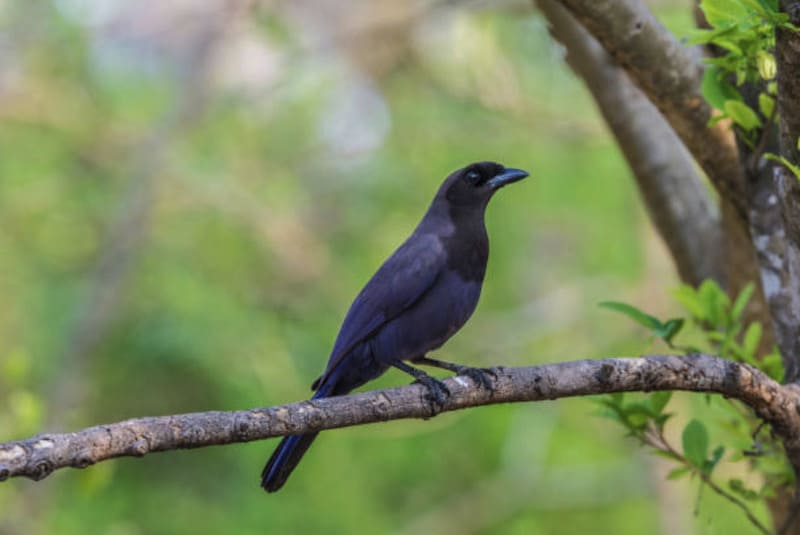
The purple-backed jays are known for their striking purple feathers, which contrast with their black wings and heads. These birds are generally shy and secretive, but can be quite aggressive when defending their territory. They feed on a variety of insects, fruits, and seeds.
Purple-backed jays make beautiful pets, and are easy to care for. They are intelligent birds that can be taught to mimic human speech.
The scientific name for the Purplish-Backed Jay is Cyanocorax morio. It has a weight of about 105 grams and a length of about 18 cm. Its lifespan is unknown, but it has a wingspan of about 41 cm.
Recommended reading: 11 Bird With Green Feathers
3. Purple-Breasted Cotinga
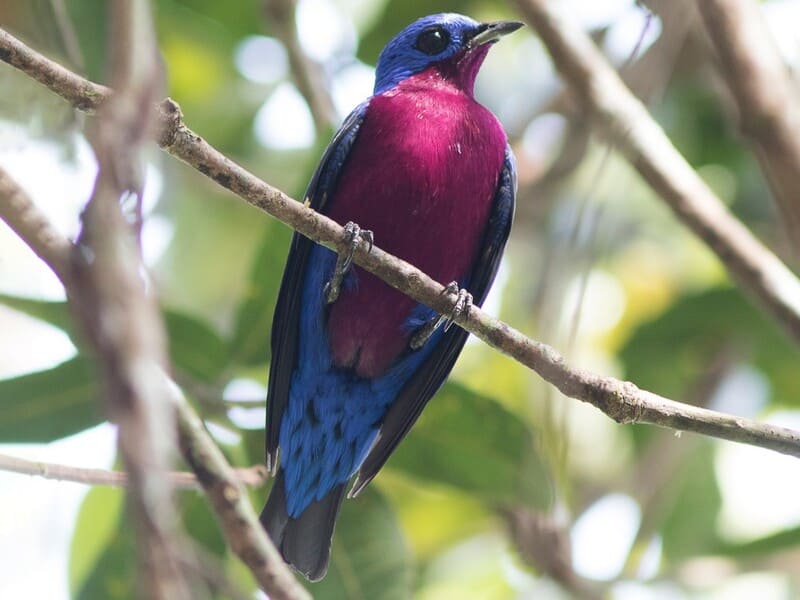
The Purple-breasted Cotinga is a mesmerizing bird found in the tropical forests of Central and South America. It has a mostly black body with striking purple breasts and head feathers. These birds are very social and often form large flocks.
They are monogamous, and the male and female work together to build their nest and care for their young. The purple feathers of this bird play an important role in communication. They are used to attract mates, intimidate rivals, and signal danger to other birds in the flock.
The scientific name for the purple-breast cotinga is Procnias bourcieri. It typically weighs between 113 and 176 grams, and its wingspan ranges from 36 to 41 centimeters. Little is known about its lifespan in the wild, but it is believed to be around six years. Its wingspan is quite short compared to other cotingas.
4. Crowned Woodnymph
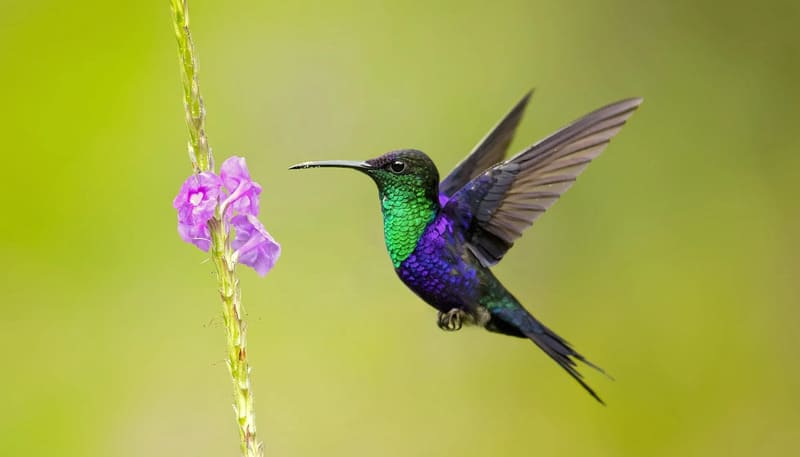
The Crowned Woodnymph is a colorful passerine bird found in the tropical New World. It is sexually dimorphic, with the male being mostly black with a brilliant purple head and breast, and the female being mostly olive green.
The Crowned Woodnymph is well known for its beautiful purple feathers, which are not found on any other species of bird. These feathers are thought to serve as a signal to potential mates that the bird is healthy and has a good diet.
The scientific name for Crowned Woodnymph is Thalurania colombica. They weigh between 1.5 and 3 ounces, and have a wingspan of 5.9 to 7.5 inches. They live an average of 4 years in the wild, but have been known to live up to 10 years in captivity.
5. Purple Starling
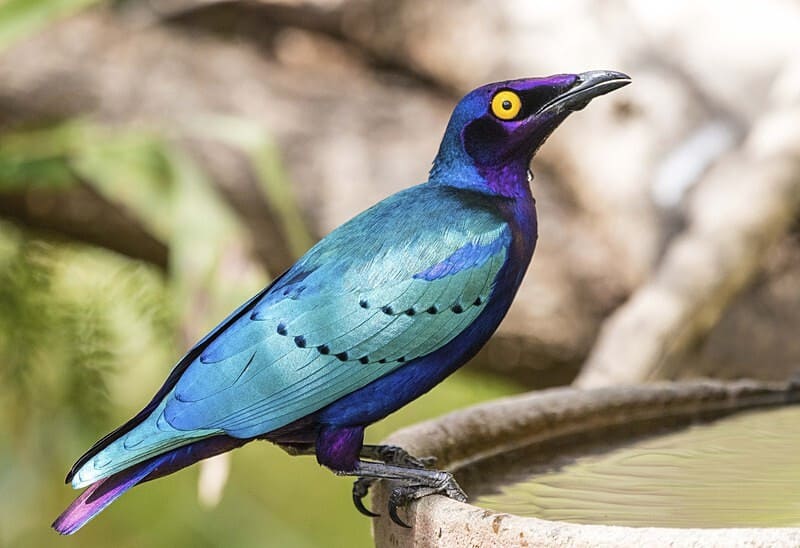
The purple starling is native to Southeast Asia and parts of Indonesia. They are beautiful bird, with shiny purple feathers and a long tail. They are usually shy and secretive, preferring to stay hidden in the trees.
They eat insects, fruit, and seeds, and can be found in forested areas, gardens, and farmland. They build their nests high up in trees, where they are safe from predators. The chicks are born with brown feathers, which turn purple over time.
These birds are popular as pets in Southeast Asia, where they are known as “lalat merah” or “red flies”. They make wonderful companions, and their lovely plumage makes them a favorite among bird enthusiasts.
The scientific name for the purple starling is Lamprotornis purpureus. This bird typically weighs between 90 and 120 grams and has a wingspan of between 35 and 41 centimeters. They can live up to 12 years in the wild, but have been known to live as long as 20 years in captivity.
6. Purple Martin
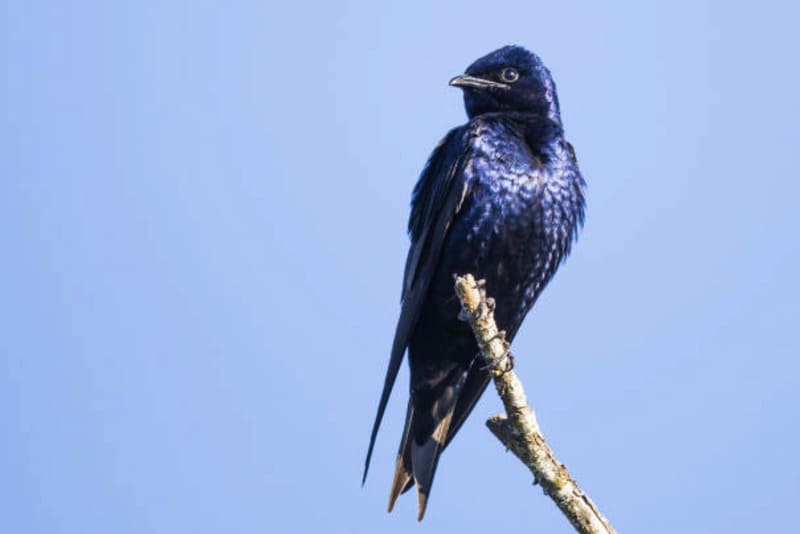
The Purple Martin is a migratory bird that has purple-colored feathers. The male birds are distinguished by their purple feathers, which are used to attract a mate. These birds are also known for their aerial acrobatics, as they can often be seen swooping and diving through the air.
Purple Martins prefer to live in colonies, and will often return to the same nesting site year after year. They build their nests out of mud and grass, and the chicks stay in the nest until they are able to fly. These birds eat insects, and can consume up to 1,000 mosquitoes per day.
The scientific name for the purple martin is Progne subis. These birds weigh between 0.5 and 1 oz (14 and 28 grams), and they measure between 6 and 9 in (15 and 23 cm) in length.
Their lifespan is typically 3 to 5 years, though some have been known to live up to 10 years. And their wingspan ranges from 12 to 16 in (30 to 41 cm).
Recommended reading: Blue Jay Feather spiritual meanings
7. Purple Honeycreeper
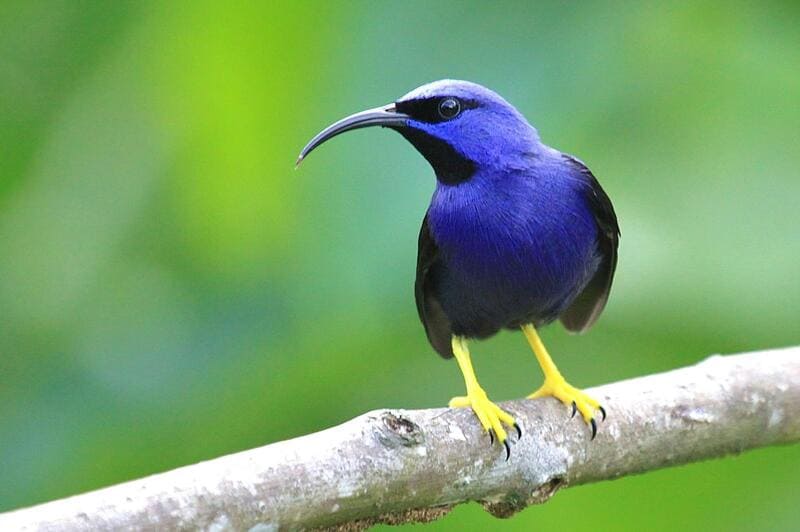
The Purple Honeycreeper is one of the most enchanting birds with purple feathers and is a popular sight for bird watchers traveling through Central and South America. They are very active birds and are always on the move, searching for food. They eat insects and fruit, and love to eat bananas.
They are usually seen in pairs or small groups, and can be quite aggressive when it comes to defending their territory.
The scientific name of the purple honeycreeper is Cyanerpes caeruleus. It weighs between 5 and 8 ounces, is about 7 inches long, and has a wingspan of 10-11 inches. Its lifespan is unknown, but it is believed to be around 5 years.
8. Varied Bunting
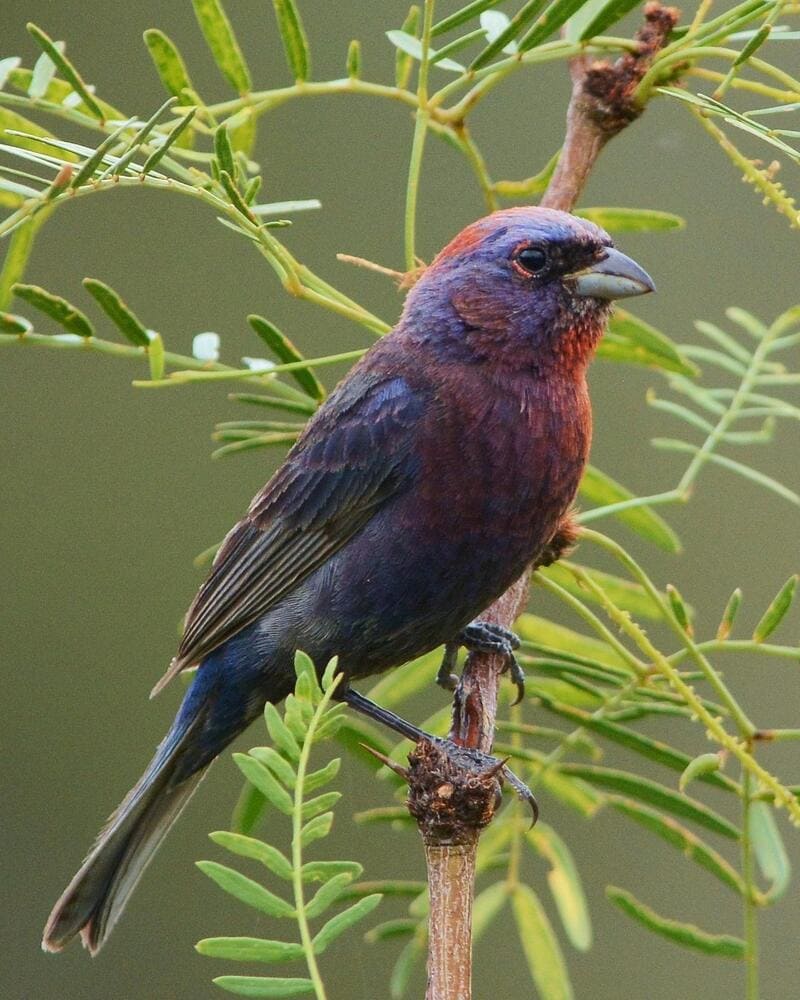
Most of the body feathers of a varied bunting are purple, but there is significant variation in the amount of purple on different individuals. Some have mostly black feathers, while others have mostly purple feathers. There is also some red coloration on the head and chest, and the wings and tail are brown.
The scientific name of the Varied Bunting is Passerina ciris. The weight and length of this bird is not readily available, but it is generally considered to be a small bird.
The lifespan of the Varied Bunting has not been extensively studied, but is estimated to be around 5 years in the wild. The wingspan of this bird ranges from 9-12 inches.
9. Violet Sabrewing
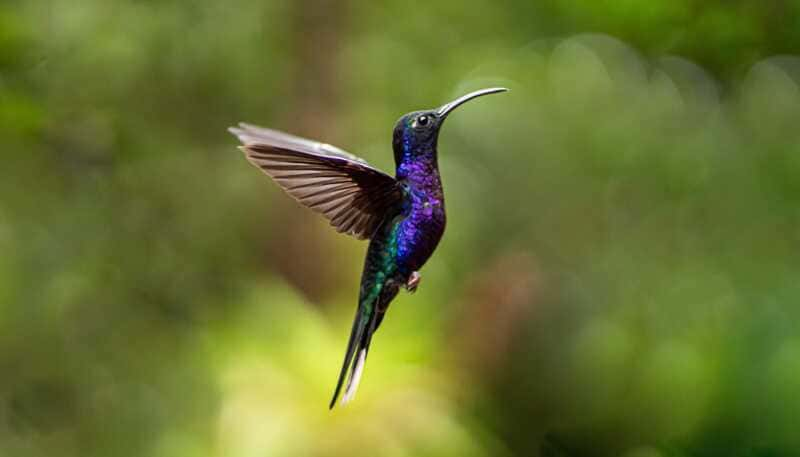
The purple feathers of Violet Sabrewing hummingbirds are caused by the presence of pigments called porphyrins.
These pigments are what give the feathers their dark color. The production of porphyrins is regulated by two enzymes, one that produces them and one that destroys them.
The production enzyme is activated by light, so the more light a Violet Sabrewing hummingbird is exposed to, the more porphyrins will be produced in its feathers. This is why their feathers become darker as they get older. They have more years to produce additional porphyrins.
The scientific name for the Violet Sabrewing is Campylopterus hemileucurus. They weigh between 2 and 3 ounces, are about 5 inches long, and have a wingspan of about 8 inches. They have a lifespan of around 4 years.
10. Purple Grenadier
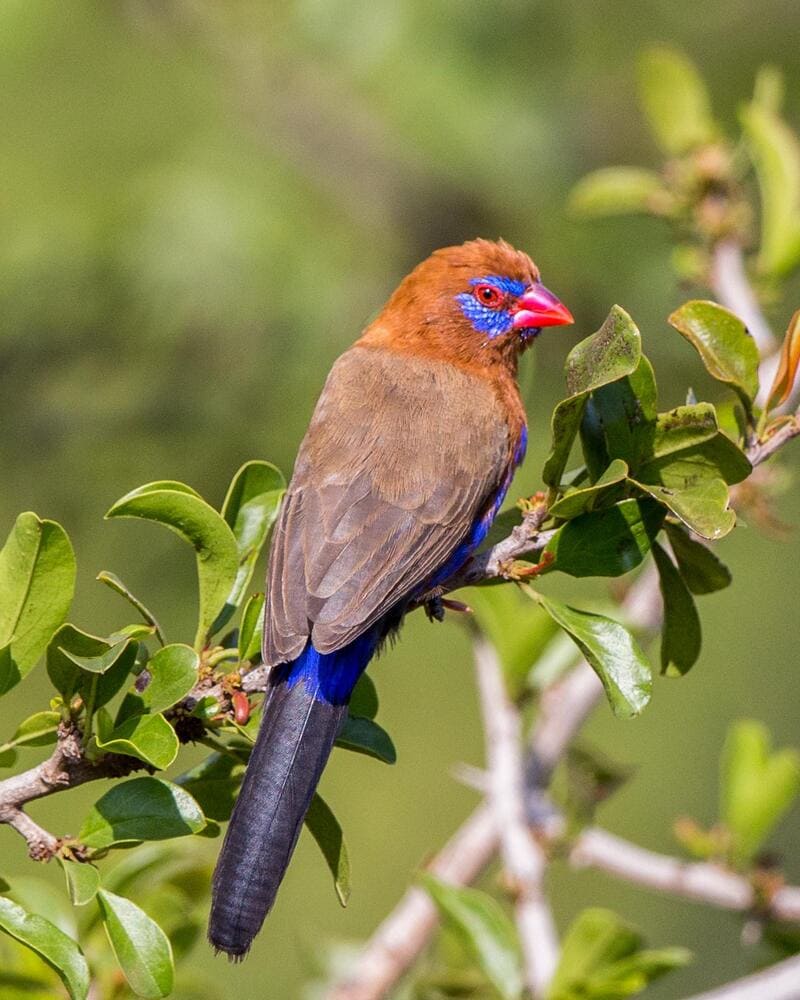
The purple grenadier has purple feathers because the tips of its feathers are black. The melanin in the black tips absorbs all other colors of light, leaving only blue and violet light to be reflected off the feather. This is why they look purple or blue from a distance.
The scientific name for the purple grenadier is Pseudocheirus peregrinus. It typically weighs around 4.5 kg and has a wingspan of around 1.2 m. Its lifespan is about 7 years in the wild.
Recommended reading: 8 Types of Blue Birds in Washington State
Fun Fact:
The purple finch is a small bird with reddish-purple plumage and purple feathers. The female Purple Finch is mostly brown with streaks of buff, while the male has a more colorful appearance.
The bird gets its name from the Latin word “finch,” which means “to pinch or squeeze.” The Purple Finch is known for its ability to squeeze through tight spaces.
Frequently Asked Questions about Birds With Purple Feathers
While the majority of birds sport feathers that are either shade of brown or green, there are a handful of species that boast brilliantly colored plumage.
From the vibrant purple of the Hyacinth Macaw to the iridescent blue of the Kingfisher, these colorful birds are a delight to behold. Now, let’s discuss some most frequently asked questions about birds with purple feathers.
Why do we see color in the feathers of birds?
The colors of a bird’s feathers come from melanin, which is the same pigment that gives human skin and hair their color. There are two types of melanin in feathers: eumelanin and pheomelanin.
- Eumelanin is the most common type of melanin in birds, and it creates black, brown, and gray colors.
- Pheomelanin is less common than eumelanin, but it creates brighter reds, oranges, and yellows.
Some birds have a mix of both types of melanin in their feathers, which results in a range of different colors.
What colors do birds see?
The colors that birds see may vary depending on the bird species, but generally, birds can see a range of colors that includes blue, green, yellow, and orange. Some birds may also be able to see ultraviolet light.
Why do we see different colors in the feathers of birds?
The colors on a bird’s feathers come from pigment cells that produce melanin. Melanin is a dark brown to the black pigment that colors hair, skin, and eyes. The amount of melanin in the pigment cells can vary, which is why some birds have lighter-colored feathers than others.
The color of each feather also depends on the way light shines on it. Some feathers reflect light in such a way that they appear to be different colors depending on the angle from which you look at them.
For example, the tops of some American goldfinches’ feathers look green from one angle but yellow from another angle.
Final Words
Though not as common as other colors, purple feathers can be found on some beautiful birds. These 12 examples are just a tiny selection of the many different species that have at least some purple plumage.
So the next time you are out on a walk in the park, keep your eyes peeled for any birds with purple feathers. Who knows, you might be the first person to ever document their existence.
Interesting articles:

